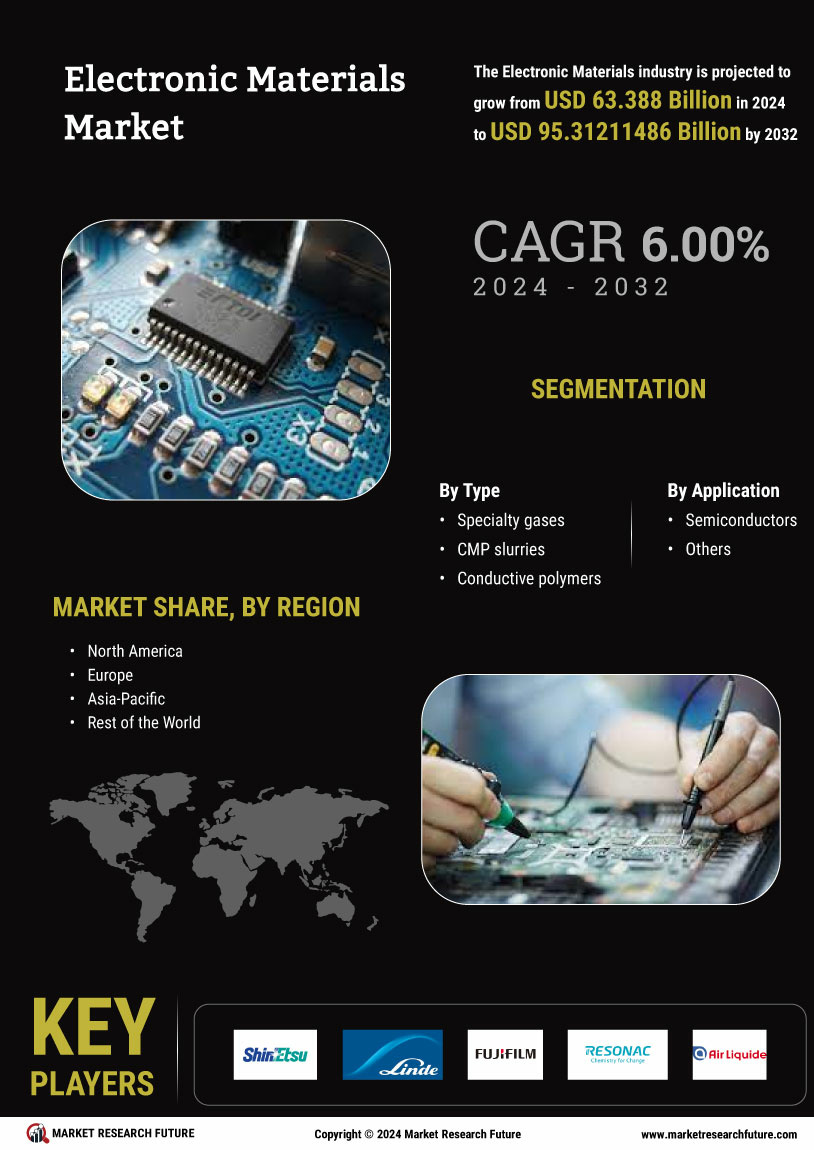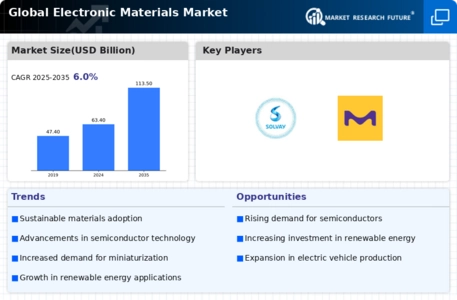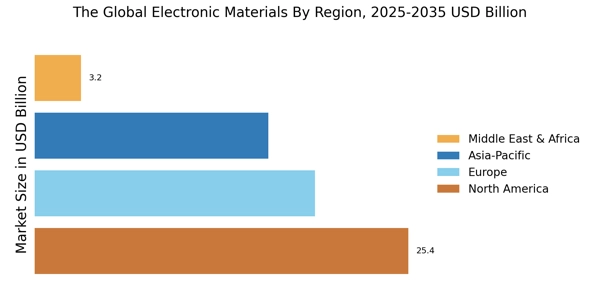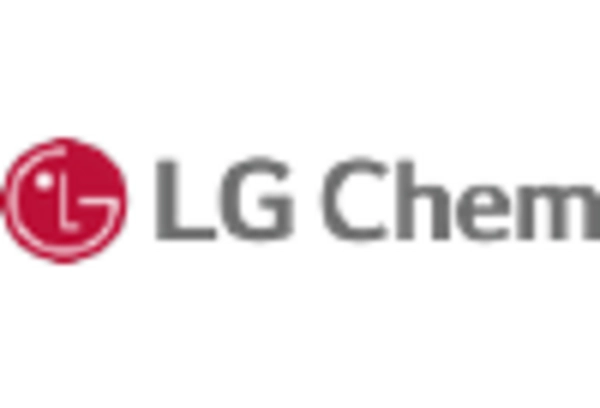Emergence of 5G Technology
The rollout of 5G technology is a transformative force within The Global Electronic Materials Industry. As telecommunications companies invest heavily in 5G infrastructure, there is a growing demand for advanced electronic materials that can support higher frequencies and data rates. The global 5G infrastructure market is projected to reach over 300 billion dollars by 2025, indicating a substantial opportunity for material suppliers. This demand encompasses a range of materials, including high-frequency circuit boards and specialized antennas, which are essential for the successful deployment of 5G networks. Thus, The Global Electronic Materials Industry is likely to benefit from this technological shift as companies adapt to meet the needs of the 5G ecosystem.
Increased Focus on Miniaturization
The trend towards miniaturization in electronic devices is a significant driver of The Global Electronic Materials Industry. As manufacturers strive to create smaller, more efficient products, the demand for advanced materials that enable miniaturization is growing. This trend is particularly evident in sectors such as consumer electronics and medical devices, where compact designs are essential. The market for miniaturized electronic components is expected to grow substantially, with projections indicating a value of over 200 billion dollars by 2025. This shift necessitates the development of innovative materials, such as flexible substrates and high-density interconnects, which are crucial for achieving the desired performance in smaller form factors. Therefore, The Global Electronic Materials Industry is likely to see increased activity as companies focus on material solutions that facilitate miniaturization.
Rising Demand for Consumer Electronics
The increasing demand for consumer electronics is a primary driver of The Global Electronic Materials Industry. As technology continues to evolve, consumers are seeking more advanced devices, such as smartphones, tablets, and wearables. This trend is reflected in the projected growth of the consumer electronics sector, which is expected to reach a market value of over 1 trillion dollars by 2025. The surge in demand for high-performance materials, such as advanced semiconductors and display technologies, is crucial for manufacturers aiming to meet consumer expectations. Consequently, The Global Electronic Materials Industry is likely to experience significant growth as companies invest in innovative materials to enhance product performance and functionality.
Growth in Renewable Energy Technologies
The transition towards renewable energy sources is driving The Global Electronic Materials Industry. As nations strive to reduce carbon emissions, there is a notable increase in the adoption of solar panels, wind turbines, and energy storage systems. For instance, the solar energy market is projected to grow at a compound annual growth rate of over 20% through 2025. This growth necessitates the use of specialized electronic materials, such as conductive polymers and advanced ceramics, which are essential for improving the efficiency and durability of renewable energy systems. Thus, the demand for these materials is expected to rise, further propelling The Global Electronic Materials Industry.
Advancements in Electric Vehicle Technology
The rapid advancements in electric vehicle (EV) technology are significantly influencing The Global Electronic Materials Industry. As governments and consumers increasingly prioritize sustainable transportation, the demand for electric vehicles is surging. The Global Electronic Materials Market is anticipated to exceed 30 million units sold annually by 2025. This growth is driving the need for high-performance electronic materials, such as lithium-ion batteries and advanced power electronics, which are critical for enhancing vehicle efficiency and performance. Consequently, The Global Electronic Materials Industry is poised for expansion as manufacturers seek to develop innovative materials that meet the evolving requirements of the automotive sector.


















Leave a Comment